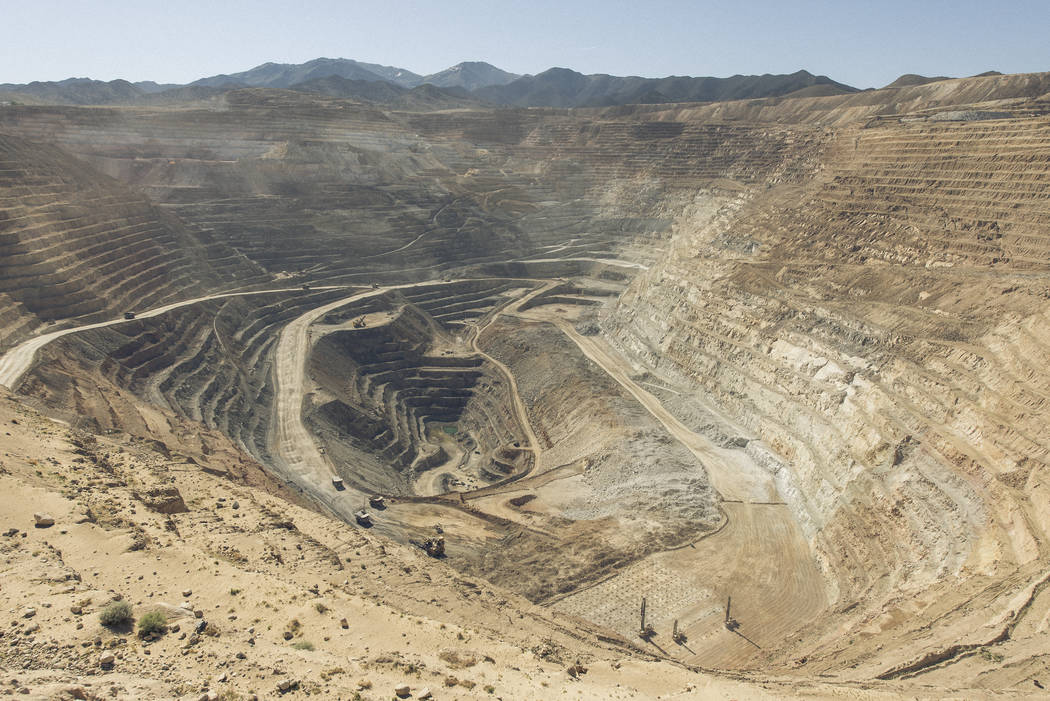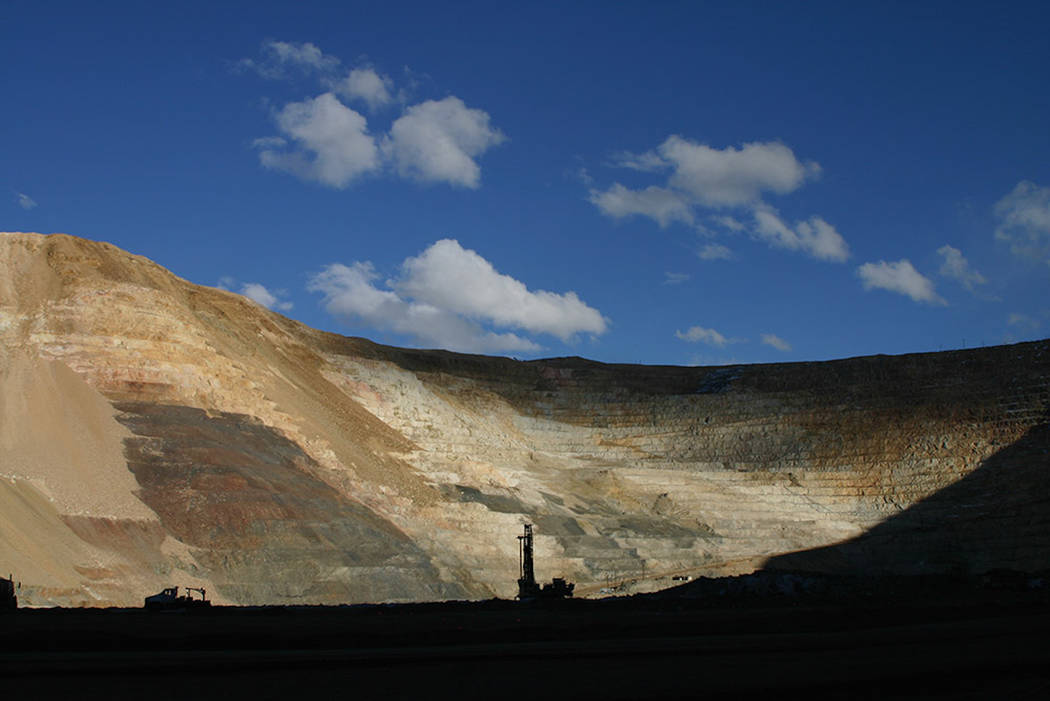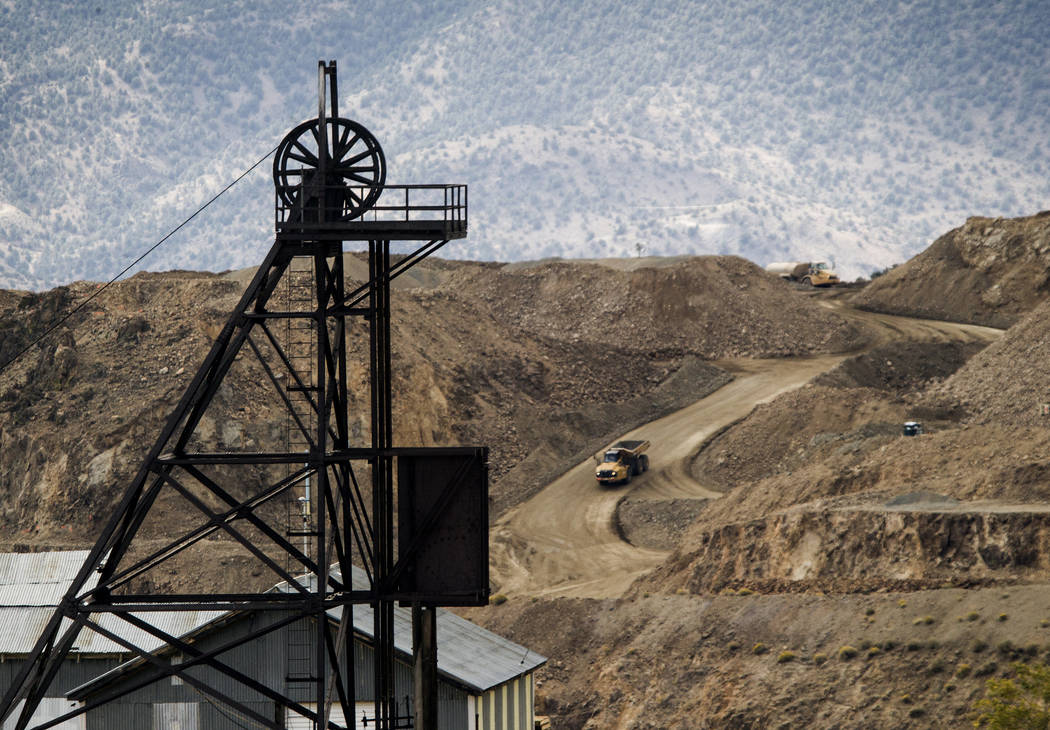Nevada’s mines could hold key to Question 6 energy standard




Nevada could meet the new clean energy benchmark approved by voters Tuesday without tearing up any undisturbed land, according to an analysis by The Nature Conservancy and the Rocky Mountain Institute.
The Silver State is home to more than enough old mines and other former industrial sites to accommodate the new solar, wind and geothermal plants that will be needed if Nevada electricity providers are eventually required to get at least 50 percent of their power from renewable sources, the analysis shows.
The Colorado-based Rocky Mountain Institute used existing U.S. Environmental Protection Agency data on potentially contaminated brownfield sites in Nevada to identify more than 2.8 million acres of already disturbed land that appears ripe for renewable energy development. That land has the potential to produce enough geothermal energy to meet about one-third of the new green energy standard, enough wind energy to meet the standard two times over and enough solar energy to meet the standard 20 times over, analysts said.
And because those brownfield sites — a term used for any previously developed land that is not currently in use — were already used for industrial purposes, many of them already have access to roads and transmission lines.
“We should do everything we can to take advantage of this great overlooked land resource that Nevada has to support clean energy goals,” said John Zablocki, Southern Nevada conservation director for The Nature Conservancy. “Achieving that requires focused policy work to break down barriers.”
A renewable conundrum
The surge in large-scale green energy development in recent years has put some conservation advocates in an awkward spot. Though they favor renewables, they don’t like seeing large expanses of once-pristine public land torn up and covered with wind turbines and solar panels.
The success of Ballot Question 6 could only exacerbate that conflict.
The measure would require all electricity providers in Nevada to gradually increase their green energy mix until at least 50 percent of their power is coming from renewable sources by 2030. Nevada’s current renewable portfolio standard requires utilities to deliver at least 25 percent green energy by 2025.
Kyle Roerink is communications director for Nevadans for a Clean Energy Future, the group that collected the signatures to get Question 6 on the ballot and led the campaign to pass it.
He said the initiative merely seeks to raise the state’s renewable benchmark, not take sides in thorny debates over wind versus solar or utility-scale arrays versus rooftop panels. How the new standard is met will be up to other people to decide, Roerink said.
Nearly 60 percent of voters cast their ballots in favor of the measure. If it passes again during the 2020 general election, it will be added to the Nevada Constitution and become the law of the land.
In search of ‘win-win-win’
In some ways, that’s the easy part. Actually meeting a 50 percent renewable portfolio standard is the tougher challenge. “Now you get to figure out how you’re going to get there, and should get there in the smartest way possible,” Zablocki said.
Earlier this year, The Nature Conservancy partnered with the Nevada Mining Association on a change to state regulations aimed at encouraging the use of old mine sites for green power projects.
As a result of that effort, Nevada Administrative Code now lists “renewable energy development and storage” as an acceptable post-production use for shuttered mining operations.
“It’s a meaningful change, but it’s an incremental change,” Zablocki said. The next step is to develop new policies and incentives that will spur actual development on some of Nevada’s old mines, landfills and other industrial sites — something The Nature Conservancy, the Rocky Mountain Institute and the Wilderness Society are teaming up to promote.
Zablocki said some of the land identified in the analysis might not prove viable for energy development, and there will almost certainly still be wind farms and solar arrays built on previously undisturbed land. But finding new and beneficial uses for old industrial sites is an idea everyone can get behind, he said.
“We want to make it easier to develop on these sites. The EPA itself is supportive of moving in this direction, and I think Nevada can lead the way in the West on this,” Zablocki said.
The Nature Conservancy is “always searching for the elusive win-win-win,” he said. “I think on this issue, it’s really there. We just need to make it happen.”
Contact Henry Brean at hbrean@reviewjournal.com or 702-383-0350. Follow @RefriedBrean on Twitter.













